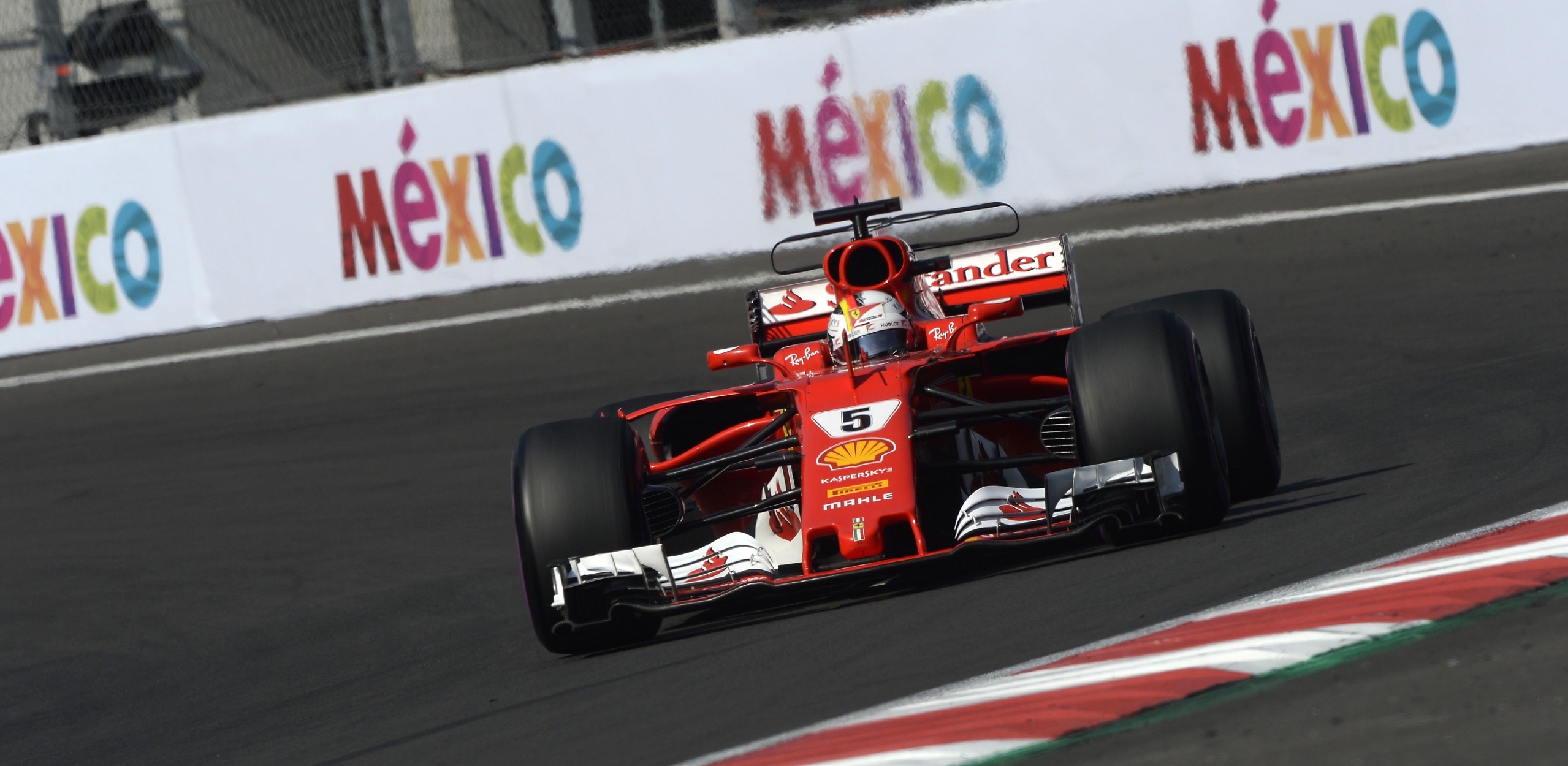
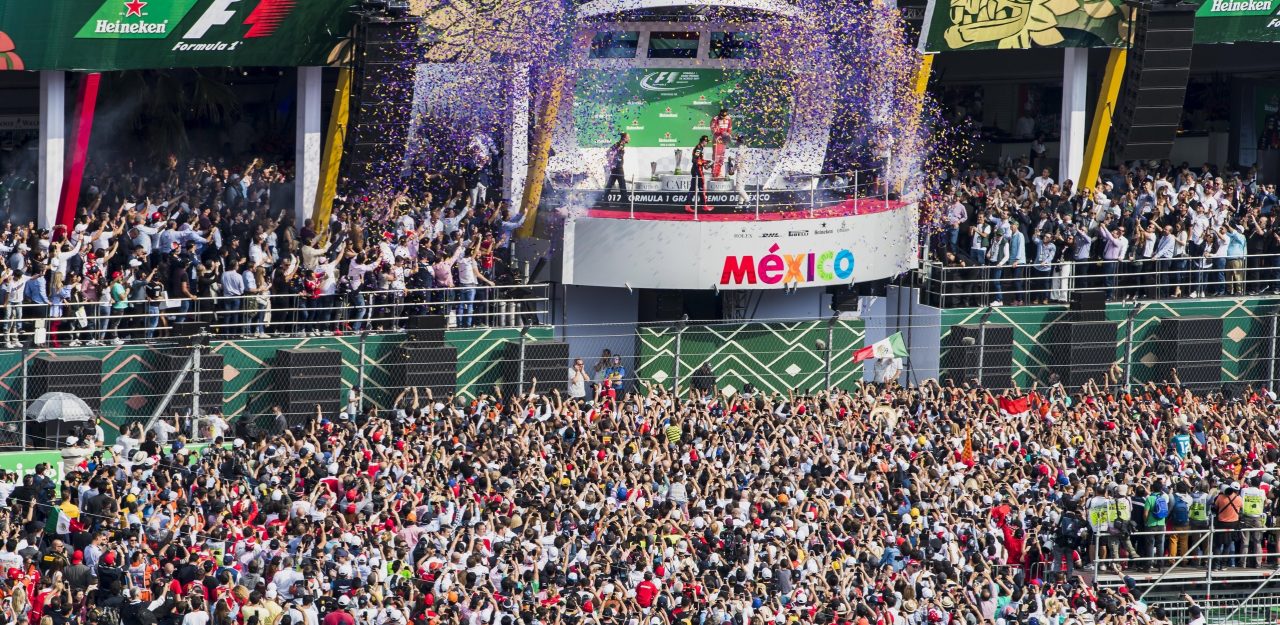
Demonstrating resilience beyond his years, Max Verstappen dominated the F1 Grand Prix of Mexico from the second corner, driving to a convincing 20-second victory over Mercedes’ Valtteri Bottas. Championship challengers Lewis Hamilton and Sebastian Vettel tangled not once but twice within those first two corners sending both to pit for repairs. They returned at the rear of the field and then battled for position in the championship. In the end, Vettel came up short; he needed to finish at least second to continue but finished fourth. Meanwhile, Hamilton had a harder time advancing, even being lapped by Verstappen. However, his ninth-place finish assured him of his fourth F1 World Driving Championship on points, making him the most successful British driver of all time.
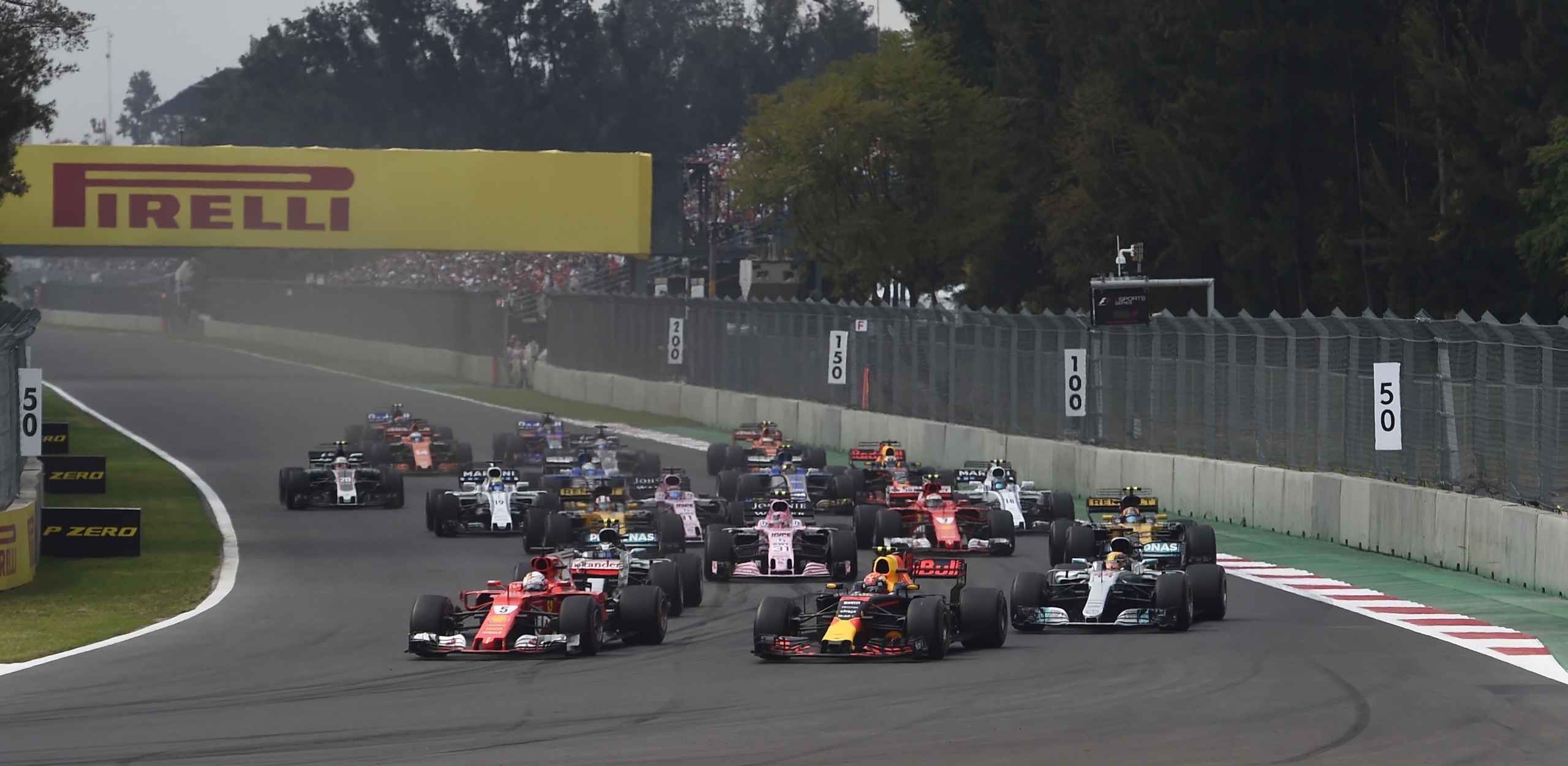
This formidable circuit was born from Mexico’s love of two racing brothers, Ricardo and Pedro Rodriguez to become home to all 17 Mexican Grands Prix that have counted towards the Formula 1 World Championship. It was Ricardo’s emergence in 1961, driving for Ferrari, that pushed the city to build the 5-kilometre circuit in Magdalena Mixhuca public park in eastern Mexico City. It was Pedro’s popularity that established Mexico’s deep fervour and reverence for Grand Prix racing, starting with his second F1 start at the inaugural 1963 Mexican Grand Prix. The race would become the traditional end-of-season Grand Prix in the late 60’s. Mexico would lose and then regain its Grand Prix twice before returning to the present FIA calendar in 2015.
With a few Grand Prix circuits faster and longer, why is Mexico City the toughest venue of the 2017 season? Altitude: Autodromo Hermanos Rodríguez sits 2,240 metres (7,350 ft) above sea level, in the Valle de México, the broad valley in the high plateaus at the centre of the country.
At this high altitude, the thin air makes all the difference. Teams must be cautious to set up the car on the knife-edge balance between downforce and cooling because with less air to use, its more difficult to push the car onto the track, cool the power unit or combust the fuel mixture. Then there’s the physical aspect, which drivers have stayed fit and arrived in the mental frame of mind to prepare for the challenge?
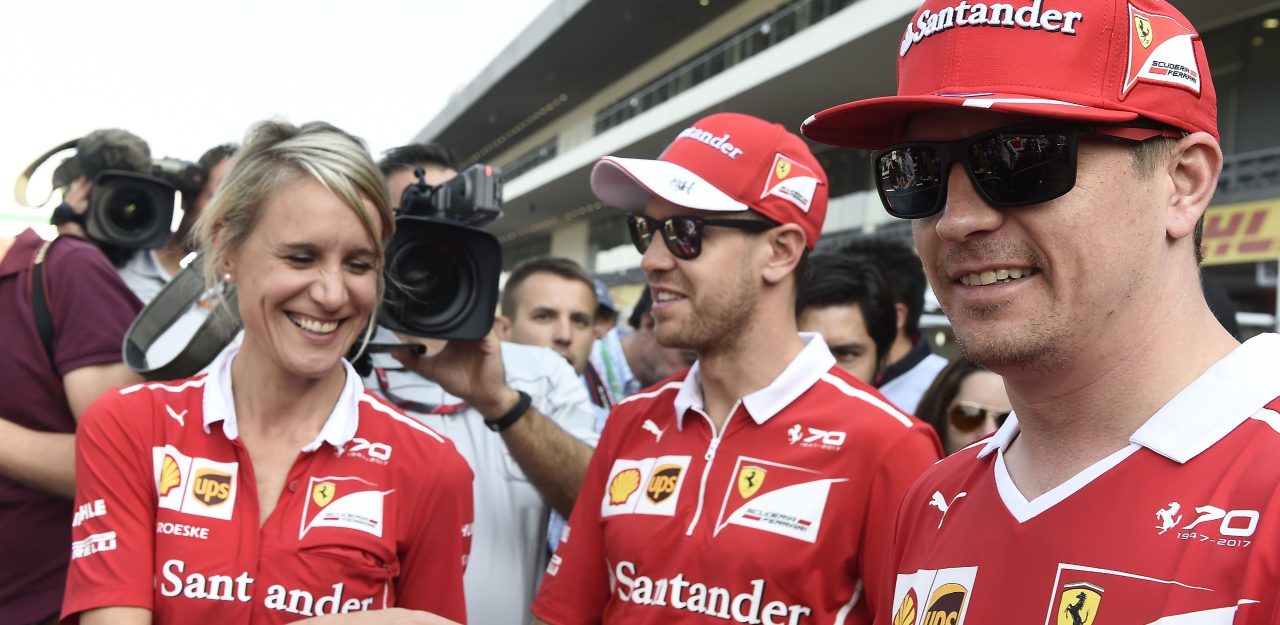
With this season’s higher-spec turbo engines, unlike a normally aspirated engine which is down on power, these engines are running standard power. They produce all the same heat, or in fact more, because the compressor is doing even more work. It is then amplified by less cooling because there’s less air mass through the radiators, but even more heat than usual, so it’s double trouble. Drivers will lift and coast everywhere, for fuel, tyres, and brakes, but its more for cooling than the other things.
The 1.2 kilometre straight gives you a few moments to relax and rest before “The Big Brake”. Drivers brake from over 350kph without the benefit of drag into a very short and bumpy target area. That’s followed by the quick esses down to Turn 10 which requires perfect timing to take as much speed as possible through that off-camber corner; miss and you’re both instantly in trouble and painfully slow. The remaining corners are very technical especially the stadium section, which is comparatively low speed and slippery. Get it right, and you save a lot of time.
The curbs this year, especially in turns 1-2 and 3-4 are now much higher (thanks to the Raikkonen-Verstappen inside pass at the US Grand Prix just last Sunday). Overall, you borrow as much surface as you can without losing control, which is its trickiest in the lower speed corners. While the teams run maximum downforce, you don’t have the expected grip from other tracks. You must find a fast, comfortable rhythm that pays off in the remaining corners.
Then there is the human atmosphere. The stands are full of the very animated Mexican fans close to the track whose voices you can hear above the engine’s growl.

Mexico’s three sessions were easily the most interesting of the year, as the circuit’s near sell-out crowd roared after the posting of each new faster time, as they watched the balance shifting from team to team.
Max Verstappen spent every second following FP3 finding the combination of balance and grip in the Stadium section, where he knew he was losing considerable time. His work delivered the payoff in Q2 with his stunning 1:16.524, a new track record by a long shot that dropped Lewis Hamilton an amazing .5-second behind in P2, with Vettel hanging on to P3. Verstappen wasted no time in Q3. He came out of the box swinging, his balanced drifts through the esses were a study in the sublime as he matched his epic Q2 time again on his first effort.
In the end, it came down to an incredible two minutes of speed, with Vettel’s 1m16.488s denying Verstappen the chance to become the youngest polesitter in F1 history by just 0.086-seconds. Amazingly, the Dutchman still has until this time next season to grab that record. Admitting that his tyres struggled, Verstappen felt his Q3 lap was better than Q2, but he just didn’t have the grip from the previous session.
When Ferrari absolutely needed the best effort, Vettel responded with his absolute best. Verstappen would start alongside the German and have a clear shot at taking the lead by the first turn. Hamilton would start P3, followed by teammate Valtteri Bottas, Kimi Raikkonen, “points magnet” wonder-rookie Esteban Ocon, Daniel Riccardo, the Renaults of Hulkenberg and Sainz and finally Mexico’s F1 hero, Sergio Perez.
Sunday would see a combination of three simple scenarios played out. Could Sebastian Vettel win, with Lewis Hamilton not finishing better than fifth, to keep the German’s title hopes on life support until Brazil?
Despite Vettel’s best efforts, would Hamilton finish at least fifth, securing his fourth World Championship?
Or regardless of the results of the Hamilton-Vettel fight, would Max Verstappen have the quicker race pace to pick up his third career victory after his surprising Malaysian win just four Grands Prix ago?
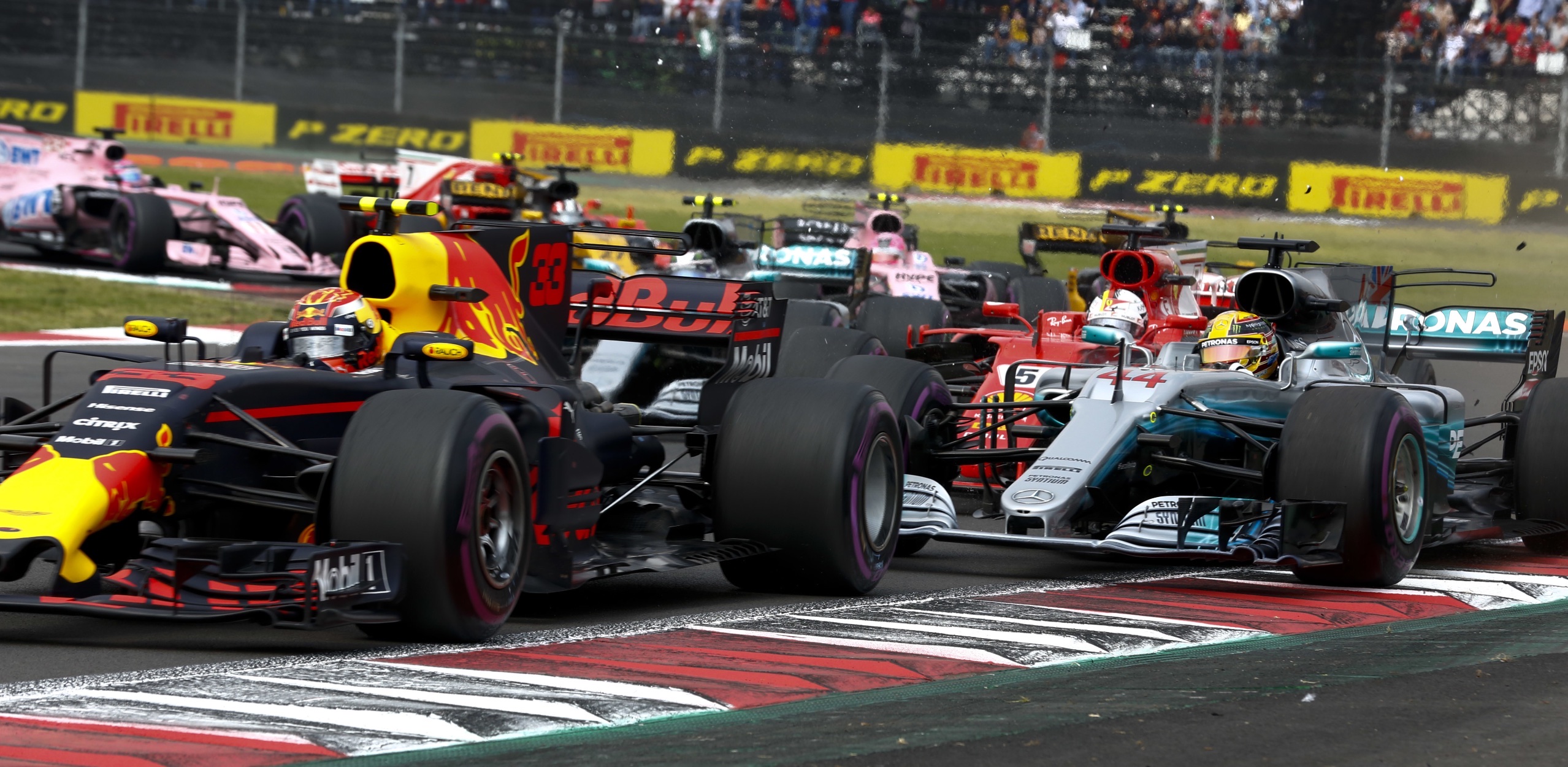
Everyone knew what was going to happen. Had each driver asked for a concise projection from multiple sources of the outcome of Misters Vettel, Hamilton and Verstappen going three abreast into Turn 1, they would have heard the same story.
Apparently, it seems hope springs eternal in a couple of Grand Prix champions. The three antagonists bet against the scenario, and two came up losers.
As the lights went out, Vettel made the best instantaneous reaction but was immediately joined by Verstappen, in the centre and Hamilton on the outside. They jousted at 300kph for the remaining half-kilometre down to Turn 1, braked and fulfilled all the prophesy. While Verstappen defended the centre, first Vettel and then Hamilton made a run at the Dutchman.
Neither were successful; rather Vettel nudged Verstappen’s right rear tyre, breaking a section off his Ferrari’s wing, which then led to Vettel and Hamilton finding each other not once but twice. In the brief second contact, Vettel’s right-rear tyre punctured the Mercedes’ ultra-soft, destroying what remained of Vettel’s left front endplate. Both were wounded, Hamilton being the most serious. By the time the Mercedes driver made it to his pit for new rubber, he was more than a minute behind; Vettel had carried on as well. Esteban Ocon’s Force India now sat in third. By the time they rejoined Hamilton was mired in 19th; Vettel in 16th.
Thus, in less than one minute, the Mexican Grand Prix switched from a glorious crowning of Lewis Hamilton’s fourth championship to desperate wheel-to-wheel battles from the back of the field; could Vettel recover to finish second or better and could Hamilton even finish?
Verstappen, for his part, never looked back. The young Dutchman just poured on the speed, leaving second-placed Valterri Bottas in his slipstream, four seconds behind by Lap 10; he seemed to have an entirely different engine. Towards the end of the Grand Prix, he prayed that was correct…

By Lap 20, Bottas was a solid six seconds arrears; the gap grew even as both Vettel and Hamilton came forward. Vettel was up to eighth on Lap 32, with Hamilton just 16th. Just then, the Renault engine in Brendon Hartley’s Toro Rosso erupted in flames. The Kiwi had been showing fantastic poise in only his second ever-Grand Prix with a points finish in the cards. The conflagration triggered a VSC, holding all to their present spacing. Verstappen used the lull to pit for softs, while Hamilton took on super-softs, and Vettel opted for ultra-softs.
Back at speed, Verstappen resumed his romp, though there were ominous signs that all might not be well with his new-spec Renault engine. Teammate Daniel Ricciardo was out on Lap 6 with a failed MGU-H, and Toro Rosso’s Pierre Gasly limped home. After Hulkenberg’s Renault rolled to a stop on Lap 26, his crew radioed it wasn’t safe to hop out; instead, he was instructed to walk down the nose and jump – signalling a KERS failure which had left the chassis electrically-charged. Word was sent for Verstappen to back off his pace, yet with the engine dialled down, Verstappen set the fastest lap on lap 41. He responded that he was sorry for being too fast. A final alarm sounded when Carlos Sainz Renault locked up on L62.
Meanwhile, both Vettel and Hamilton continued their rise up through the field. As Vettel reeled in third-placed teammate Raikkonen after dispatching Perez and Ocon, Hamilton came upon Fernando Alonso on L66. The duo began a wheel-to-wheel battle that ended in Hamilton moving forward to ninth, but not before losing a bit of carbon fibre to the McLaren.
At the flag, Verstappen’s Renault engine indeed survived, with the Dutchman finishing 19.678s ahead of Bottas; third-placed Raikkonen was more than 55-seconds back. Vettel picked up four more places after the VSC period to take fourth, but it wasn’t enough. He finished ahead of Ocon, and more than 70-seconds behind Verstappen. Rounding out the points finishers was Lance Stroll in sixth, then Force India’s Perez, Magnussen’s Haas, Hamilton and Alonso.
It was Verstappen’s second win of the season and the third of his short career. With his mature driving and his Renault engine as strong as it appears, victories in the final two Grands Prix in Brazil and Abu Dhabi are now indeed within his reach.
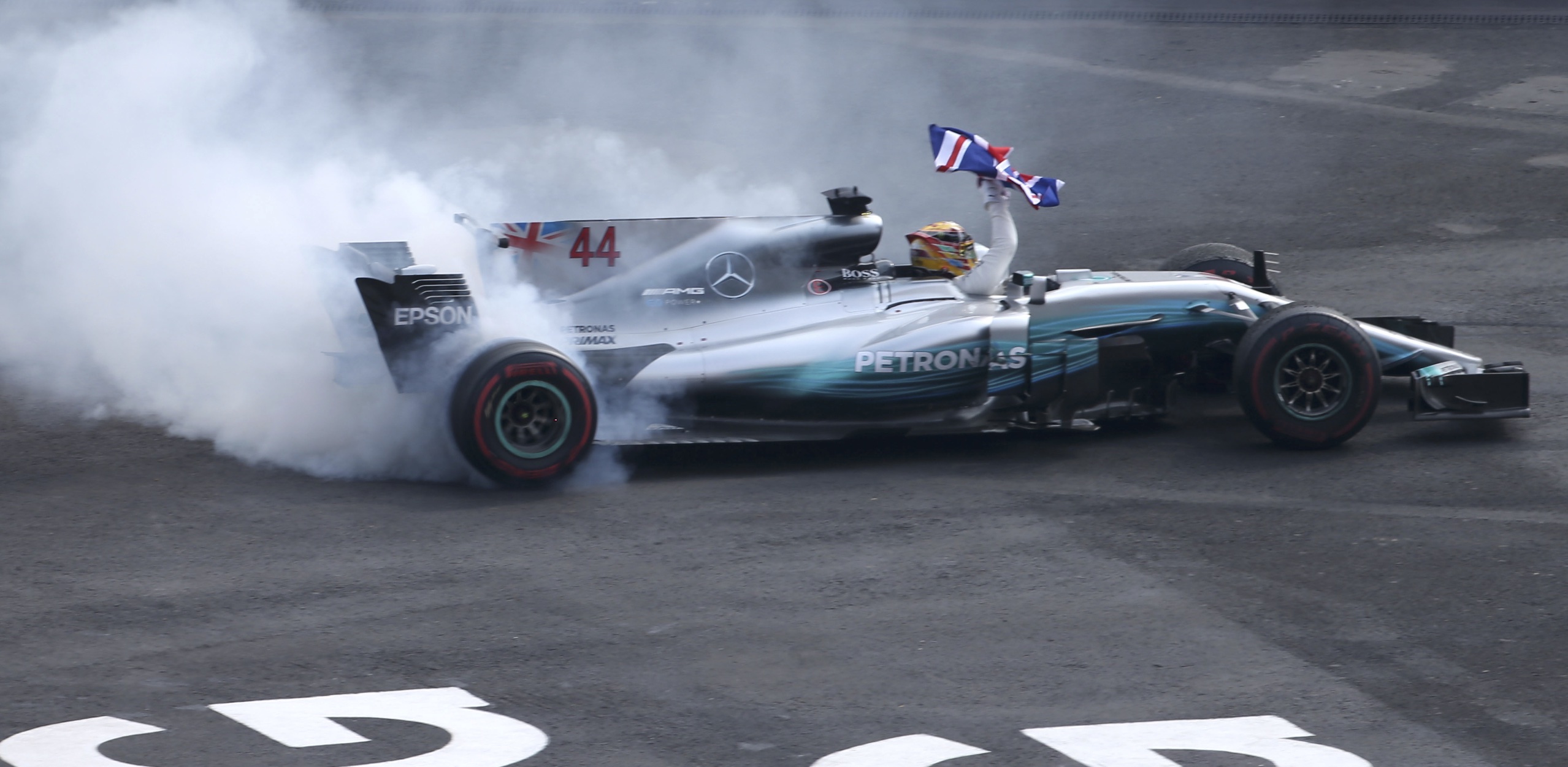
Lewis Hamilton failure to finish on the lead lap was the first time since the Spanish GP in 2013. The last driver to be lapped during a race in which he secured the F1 World Championship was James Hunt, in 1976.
Once again Sebastian Vettel appeared the architect of his misfortune – he was ill-advised to tangle with Max and then Lewis at the start … But tangle he did, and he paid the price for his unnecessary aggression. Knowing that Verstappen had record speed in hand and an aggressive style ill-suited to attempt to pass in a final title fight, Vettel felt forced to try a bold move in Turn 1.

Valtteri Bottas needs to take the time to reset himself for next season. No other team sees its second driver finishing as far away from his teammate as Bottas to Hamilton. By the end of the 2018 season, drivers like Daniel Ricciardo will be available. He needs to find the handle on his Mercedes as soon as Brazil.
Now it’s on to Brazil in two weeks.
Lewis Hamilton won the F1 drivers world championship for the fourth time, becoming the most successful British driver of all time, but not in the way he had hoped to do it.
Hamilton was looking for a moment of glory with a race win, but instead his race was blighted by contact with his title rival at the start that led both into the pits at the end of Lap 1. He finished ninth.
Although they got their third win of the season, with Max Verstappen, it was also difficult weekend for Renault’s engines. Pierre Gasly hardly turned a lap in practice, Daniel Ricciardo took a massive grid penalty and then suffered a failure in the race, Hartley’s Toro Rosso race ended in flames and Nico Hulkenberg was also told to ‘stop the car’. Carlos Sainz also retired from the race.
The French manufacturer has had a push towards the end of the season and Red Bull has risen on performance, but it’s not been without pain.
Much rests on what they can do for 2018 as to whether the works team and McLaren can get podiums, or even if the Red Bull team can get regular wins and fight for the championship.